#foraging witch
Explore tagged Tumblr posts
Text
How do y’all start getting into herbalism/foraging😭
I feel like I’ve been able to self learn so much other type of witchcraft but I have a hard time finding out how to start with foraging and herbalism in ways that don’t involve cooking. I don’t always have the patience, energy, or interest to cook but I love nature so I want to start small pls send tips 😭
#witch community#witch tips#witch advice#green witch tips#green witch#green work#green witchcraft#herbalism#foraging witch
9 notes
·
View notes
Text

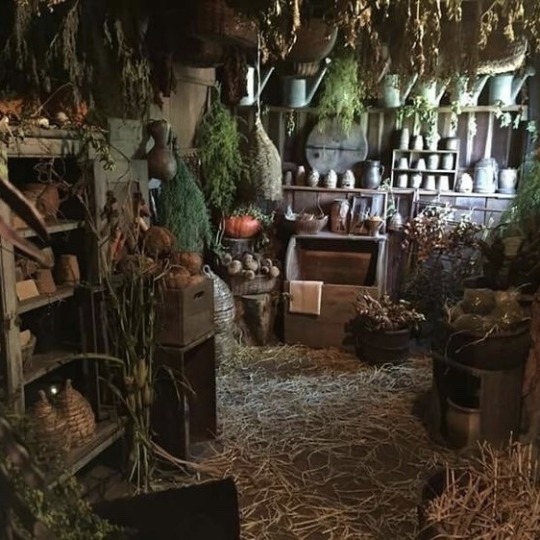


𝘸𝘰𝘰𝘥 𝘸𝘪𝘵𝘤𝘩 🍃
x - x / x - x
#cottagecore#nature#naturecore#warmcore#forest#forestcore#green witch#witch aesthetic#witchlr#overgrown#moss#goblincore#berries#foraging
2K notes
·
View notes
Text
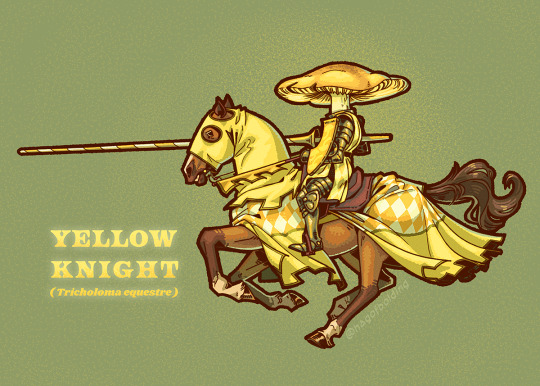
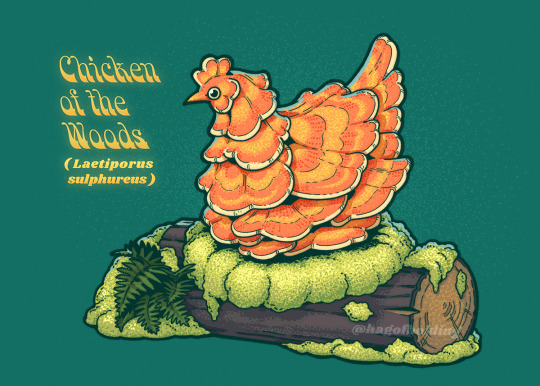
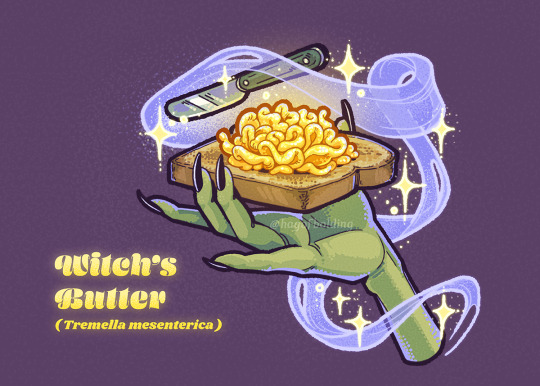
All 3 fungus postcard print / sticker designs, looking forward to getting all these printed and in my sticky little hands SOON
#fungus#mycology#mushrooms#illustration#character design#yellow knight#knight#chicken#chicken of the woods#witch#witchcraft#witchs butter#foraging
6K notes
·
View notes
Text
It's important to remember when foraging that invasive species are fair game. It's the only time a forager is within their rights to take way more than they could ever use.
You can also pull it all and toss it. However I prefer using as much of the plant as you can. Invasive or not it's still a life we should be respecting.
356 notes
·
View notes
Text

at the pumpkin patch. it's 'the', because this is where they decided to be part of my life, or well my hair, last year. happy early gotcha day, you two.
#pkmn irl#pokeblogging#pokemon irl#rotomblr#rotumblr#glinda is fluffier than usual because her winter coat is coming in.#i'm also holding her basket. she's supposed to be a witch foraging for berries but... little red riding hood is the most common mistake.#after this photo was taken willow tried holding the small pumpkin in the corner there in her mouth. didn't like the taste though.
70 notes
·
View notes
Text
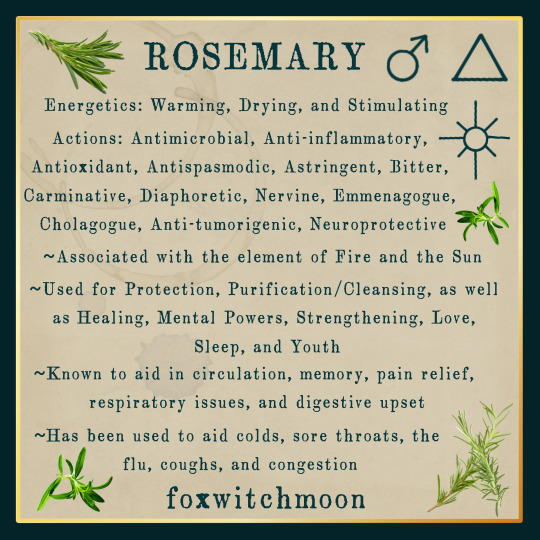
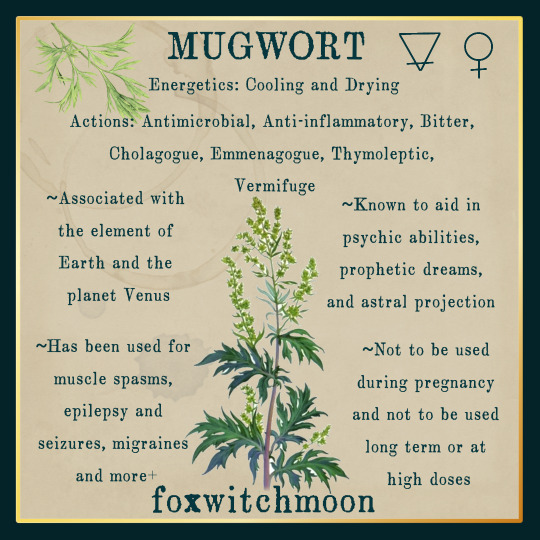
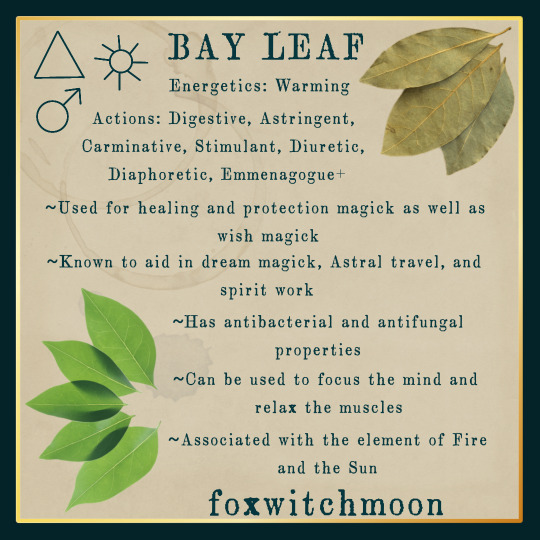
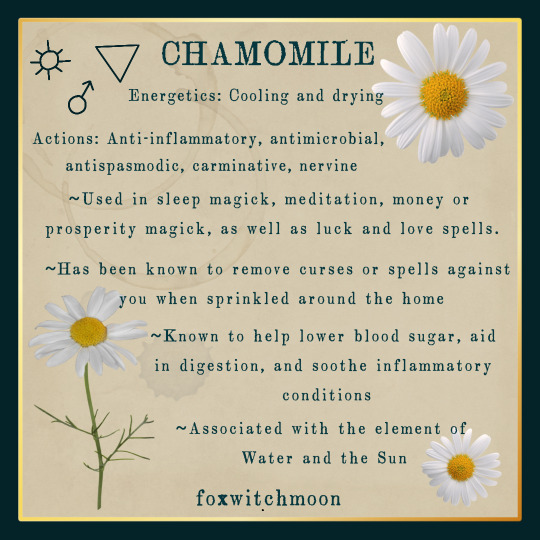

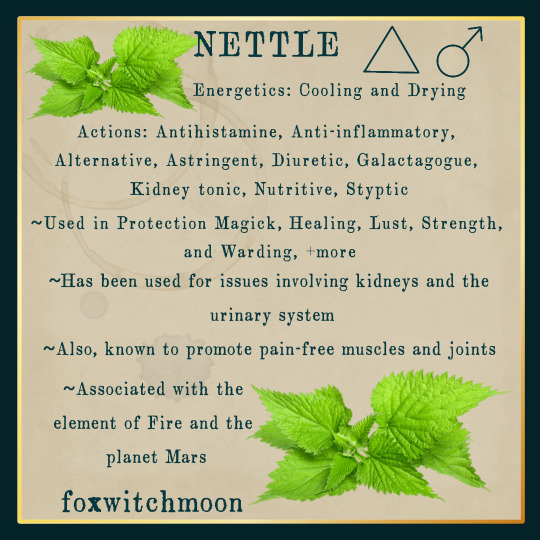
Herbology × Magick🍃
Follow @foxwitchmoon on IG for more🌿🔮🌙🧿🕯🪻🗝✨️
#witchblr#grimoire#witch#witchcraft#witches#occult#plants and herbs#foraging#chakras#herbology#herbalwitch#herbal medicine#herbalism#green witch#eclectic witch#lunar witch#moon magic#rosemary#nettle#dandelion#mugwort#bay leaf#chamomile
707 notes
·
View notes
Text


Wild Mushroom & Walnut Stuffed Pasta in Herb White Sauce
Here’s the recipe you were asking for! I’ll will write out the whole thing and put it on my Patreon soon. If you try it, let me know!! 💜
55 notes
·
View notes
Text
Datura
Datura has been used in witchcraft, shamanic practices, and religious rites for untold centuries. Many ancient cultures considered the plant to be sacred. Please note, however, Datura is highly toxic. It is safe to handle (wash your hands) but never ingest it. You will suffer never-ending, nightmarish hallucinations that can leave you with serious trauma and brain damage. Always treat this powerful plant with the utmost respect.
Other names: Sacred datura, jimson weed, devil's trumpet, witchweed, loeoweed, devil's apple, Jamestown weed, Moon flower, stramonium
Gender: Feminine
Element: Water, Earth
Planets: Moon, Saturn, Venus, Pluto
Deities: Hekate, Hades, Horus, Apollo, Kali, Lilith, Leviathan, Melinoe, Baba Yaga, Thoth, Tiamat
Magical uses: Baneful magick, protection, dream work, divination, astral travel, invisibility, boosting power, Lunar magick, spirit work

#magick#witch#lefthandpath#witchcraft#poison path#herbalism#natural herbs#foraging#green witch#herbs#herbal magic#eclectic#eclectic witch#eclectic pagan#pagan witch#pagan community#witch community#witchblr
65 notes
·
View notes
Text
𓍊𓋼𓍊𓋼 Wild Plant Lore 𓍊𓋼𓍊𓋼
Some notes from my BOS of weeds / local plants that can be used in one's craft. Includes magickal correspondences, traditional uses (medicinal and culinary), and some of their folklore.
Disclaimer at the end !!
𓍊𓋼𓍊𓋼𓍊𓋼𓍊𓋼𓍊𓋼𓍊𓋼𓍊𓋼𓍊𓋼𓍊𓋼𓍊𓋼𓍊𓋼𓍊𓋼𓍊𓋼𓍊𓋼𓍊𓋼𓍊
Acorns- the nuts of oak trees. They're made of one seed covered by a tough shell with a cap on top. These nuts can be eaten and are turned into flour to make breads and pastas. Much about acorns are unknown as they are mainly unused in everyday life, but we do know that they contain a high fiber content which has been used to treat bloating, diarrhea, stomach pains, and other digestive issues. Because these nuts come from oak trees they’ve been a symbol of great wisdom and longevity in many cultures such as Celtic and Nordic. Many people have worn necklaces with acorn charms on them to bring protection
• Protection, prosperity, growth, wisdom
Bull nettle- Thick stock and toothed leaves with stiff prickly stinging hairs, the flowers are small, white, and covered in hispid. The seed pods are lightly coloured and cylindrical, containing ~3 seeds. Touching this plant will cause a stinging, burning, or itching sensation that will last for hours. The seeds from the seed pods are edible and taste nutty but need to be harvested with extreme care as to not sting yourself. The seeds can be roasted or ground into a "cornmeal." The root of bull nettle is edible, it's similar to a potato but tougher and the core is so tough it should be discarded.
Binding, banishing, warding, baneful (to cause pain)
Cattails- Cattails are semi-aquatic plants that consist of multiple long spiked leaves with one center spike holding a sausage-shaped head that is filled with cottony seeds. Their rhizomes can be turned into a flour with a high protein content and the shoots can be cooked and eaten. The stems and leaves can be turned into paper. A poultice from the roots can be used as an antiseptic, for burns/cuts, and to reduce inflammation. When harvesting this plant please do not overharvest, it’s a very important part of a wetland’s ecosystem ! Also, always make sure the water near the cattails is clean because cattails filter pollutants out of the water so if you plan on consuming the plant, you could also be consuming those pollutants.
Fertility, growth, prosperity, peace, water-associated magick, cleansing
Catchweed- Also known as cleavers, hitchhikers, goosegrass, or sticky weed. Catchweeds are branchy, square stems that latch onto other plants and buildings with small hooked hairs on their leaves and stems. They have tiny, star-shaped, green or white-ish flowers with four petals. They also have small burrs that contain a few seeds that are covered in hooked hairs so they can latch on to animals to disperse seeds. For those who want to risk getting pricked, catchweed is edible. Young leaves and stems can be cooked and eaten like spinach. This plant is also in the same family as coffee, meaning that you can dry and roast the seeds in their burrs to make a lower-caffeine coffee substitute and teas. Poultices have been made with the whole plant, as with tea washes from dried leaves, in many cultures for light burns, small wounds, and eczema. It has a cooling effect so it’s also used in infusions for bug bites, stings, and poison ivy.
Energy, binding, commitment, protection during travel
Chickweed- Also called chickenwort/weed, winterweed, and simply ground cover as that’s its primary use in modern society. Long stems with pointed, oval-shaped leaves and tiny white star-shaped flowers that resemble carnations. Its star-shaped flowers earned it the botanical name “Stellaria media”. Its flowers and leaves are both edible and are very popular in salads, soups, and stir-fries. It has a taste similar to sprouts that you’d use in a salad. Chickweed salves are used for skincare, poultices for poison ivy, and teas for digestion. Historically, it's been used for skin ailments like itching, dry skin, and even bruises or bug bites from a tisane/tea of the stems applied to the affected area. In European folklore, it was said to help promote a happy, balanced family and love life. This is believed to come from how chickweed grows so closely with all its stems intertwined but in a way that promotes each part to grow healthy, so it promotes everyone in a household getting along with one another while having their own sense of individuality. It’s also associated with perseverance (like most weeds I’ll admit), this is because chickweed is seen growing everywhere, in yards, in forests, on piles of dirt. If it sees an opportunity, it’ll take it and thrive year-round.
Love, stability, loyalty, communication, lunar-associated magick
Clovers- white, balled flowers with three to four small, round leaves. Every part of this plant is edible, the leaves and flowers are sweet and vanilla-y so they are good in teas and sweets. Clover has been used to ward off fevers and used in tisanes/teas for inflammation. Clover has been associated with good fortune for centuries, especially four-leaved clovers. A shamrock is a symbol of a three-leafed clover representative of the Christian Holy Trinity, it’s also believed that the Celtic druids thought shamrocks to be significant because they had three leaves possibly representing the underground, earth, and sky.
Luck, prosperity, happiness, faith
Creeping Speedwell- Teeny tiny violet/baby blue flowers with light yellow middles, it is incredibly fast-growing and can be found in most yards. Speedwell is edible and good in salads, pestos, and smoothies. Tea is made from the leaves and flowers to help clear congestion, allergies, and coughs. Some add it to their baths to help with their allergies and inflammation, inflammation is also helped by a poultice. In some folklore, it’s said that a tea or ointment from speedwell could help one with psychic visions and faerie sight. Before I truly knew the folklore behind speedwell I had this sense that it would help with your clairsenses.
Abundance, divination, psychic/clairsense work
Creeping buttercup- Buttercups are toxic and will leave blisters when raw so they must be cooked or dried before being consumed, even then it's not recommended to eat. A poultice of the (boiled) leaves is used for inflammation and wounds and a tea from the plant is used for its analgesic properties, but be wary of the blisters that may occur. Buttercups used to be used to ward off faeries, many farmers would plant these around their cows to prevent them from being stolen from the fae. There are a lot of stories relating buttercups to cows which is very very cute but ironic because buttercups are actually toxic to many animals! For its many associations with children, fairies, and coyotes across various cultures it can also be related to mischief
Youth, happiness, love, protection from fae, mischief (jinxes/hexes/glamours)
Creeping charlie- Also known as ground ivy. Creeping charlie has square stems with dark, rounded or fan-shaped, toothed leaves. It has small blue or lavender, funnel-shaped flowers that grow in clusters of two or three in the spring. Creeping charlie is edible and has a long history of being used in beer and cheese, it tastes subtly minty as it's in the mint family. Young leaves are good in salads to freshen them up and it's also really good in teas and sweets. There is a risk of it being toxic if consumed in large quantities though. For centuries now it's been used in teas to calm a cough, been said to help with headaches, and has been used on the skin to reduce pain and soothe inflammation. Some have turned it into a snuff and used it for congestion, kind of like Vaporub. It was actually brought over from Britain to the Americas for its medicinal uses, now it’s one of those weeds people will spend tons of money trying to get rid of. Alike creeping buttercup, it’s said that some may have used this to ward magick from their livestock and themselves. Some say it’s good to use to find out who has cursed you or sent the evil eye your way and in some stories, people would drink it as a tea to get rid of their shyness.
Protection from magick and spirits, divination, clarity, courage
Deadnettle- My favourite weed :) Square stem, fuzzy leaves that occasionally are red/purple at the top, with tiny tube-shaped light pink flowers. Despite technically being a nettle, it’s not a true nettle so very few people will have a reaction when touching this plant. Deadnettle is part of the mint family and every part of it is edible, despite that though it's not very minty and is floral and sweet. My favourite parts are the tiny pink flowers which have sweet nectar in them and are good in teas, syrups, sweets, and jams. The leaves are good in teas, smoothies, pestos, and salads. A poultice or salve can be made from the leaves for wounds and teas can help with allergies. This plant is sometimes called purple archangel because it pops up around the Feast of the Apparition when it was said St. Micheal appeared. It’s associated with determination because this lil dude will grow anywhere, even in spots with the worst quality soil.
happiness, determination, peace, healing
Dandelion- Dandelions are bright layered yellow flowers with toothed leaves that grow pretty much anywhere there is enough dirt to get their roots in. The entire plant is edible, the flowers are slightly sweet making them good for salads, syrups, and sweet. The leaves are slightly bitter but that can be lessened when harvested young or boiled, they're good as spinach replacements and can be dried for teas. The flowers can also be turned into dyes. The plant's name can be literally translated to 'healing herb' as it has been used in many cultures for it's gut health and detoxifying properties. Teas and tinctures from leaves are made for a diuretic and flowers are made into salves or beauty products to treat acne/eczema and to reduce inflammation. About dandelions being diuretics - the name dandelion comes from the french name dentdelion (tooth of the lion) but there’s actually a second French name, “pissenlit”, which means piss the bed !!
luck/wishes, communication, balance, courage, youth
Daisy- Daisies are low-growing flowers with thin, long, white petals and yellow disc florets (middles). Common daisies are edible, these are really found growing anywhere even in your lawn. Leaves can be used in salads or stir-fries and flower heads can be pickled or used in salads. Wines, soups, and teas are also commonly made from daisies. The flowers have a slightly bitter taste but look pretty in dishes. Daisies have been used in teas for coughs, bronchitis, and common colds. It's also been used to "stimulate the digestive system" to promote appetite. Daisies have been into lotions and other skincare products to treat rashes, eczema, and other skin issues. Daisies came to be associated with love and motherhood through it being the flower of Freya, innocence/purity through the story of Vertumnus and Belides where the flower gets its scientific name, and purity the popular phrases like “fresh/clean as daisies”.
Happiness, cleansing, love, purity (cleansing), motherhood/childbirth
Feverfew- Feverfew are daisy-like flowers with bright yellow middles and white petals, with yellow-green leaves in a feathered arrangement, that grow in small bushes together. Feverfew is edible but many will steer clear of it as it has a very bitter taste. It’s often made into teas and used in pastries. Although feverfew isn’t used to reduce fevers anymore, there are still many health benefits and medicinal uses of the plant, some people even calling it ‘medieval aspirin’. People will take feverfew pills or apply a poultice to relieve pain from arthritis and inflammation. A poultice can also be applied to minor cuts, scrapes, and bug bites. Teas can be made for headaches and some use it to help with menstrual pain. Feverfew is also known to show some skin benefits by reducing redness and inflammation. Feverfew may increase bleeding as it acts similar to an anticoagulant, because of this it is advised that if you are taking a blood thinner like aspirin, Dabigatran (Pradaxa), Heparin (Innohep), or others, you talk to your doctor before taking feverfew. This plant has more medicinal uses than references in mythology but I did find a few references to it being believed to be able to save the life of someone that had fallen from the Parthenon, a temple to Athena, which gave it the scientific name parthenium.
Healing, curse-breaking, love
Lesser celandine- Also known as pilewort or sometimes fig buttercup. Pilewort is a plant on the buttercup family that has dark, heart-shaped leaves and bright yellow flowers with glossy petals. Despite its pretty exterior, touching the plant could cause rashes or blistering especially when the plant is crushed. Ingesting the plant can cause dizziness, vomiting, and worse. While there may be ways to cook out the toxins, I cannot advise anyone to consume this plant without proper experience. This plant is also known as the spring messenger as it's one of the first plants to bloom in the spring. Lesser celandine was referenced a lot in literature, most being about love and foreshadowing happiness alike how it signals spring.
Joy, love, Spring associated magick
Maple seed pods- Maple seeds, also known as helicopters or samaras, are the seed of maple trees, as one would assume. These are winged pods consisting of a papery tissue surrounding a single seed that is usually joined together in pairs of two. The seeds are edible once the outer covering has been removed and taste better while young, becoming bitter as they mature. Some say that smaller pods taste sweeter and larger ones taste more bitter. They're good in roasts, stir-fries, and salads. They can also be dried and pounded into flour ! Much of what we know about maple seeds are simply culinary and there's not much information on their medicinal uses. The majority of the correspondences of maple seed pods come from maple trees which represent balance and longevity. They also are associated with childhood after the many many years of children playing with these helicopter-like seeds.
Longevity, growth, balance, youth
Mulberries- Mulberries come in three different colours which are red, white, and black. Different mulberries grow on different mulberry trees. Black mulberry trees have an orange-y-toned bark with toothed, heart-shaped leaves. White/red mulberry trees have a greyish bark with large, deeply lobed, oval-shaped leaves. Mulberries look very similar to blackberries but longer with each cluster of fruit containing a seed. Mulberries are edible, black ones taste the best and can be both sour and sweet and the white/red ones are duller in flavour but sweet. These are made into jams, syrups, wines, sweets, sorbets, really anything sweet and it tastes great ! These berries are more known for their culinary uses but some studies suggest that they can help reduce cholesterol and improve digestion. In Greek/Babylonian mythology, red mulberries came from white mulberries that were stained red from the deaths of the star-crossed lovers Pyramus and Thisbe which gave them the association of love and death.
Love, death, faith, wisdom
Osage oranges- Also known as horse apples or hedge apples. Osage oranges are a yellow-green fruit with a very rough and bumpy peel. These oranges grow on trees called Maclura pomifera. The wood of these trees are used for very good firewood and yellow-green dyes. The Osage natives would use the wood from the tree for many things like bows and boats as it’s very flexible. The roots of the trees are sometimes made into water infusions to help with eye conditions. People have also used the wood, or even sat out the fruit, to deter insects. Osage oranges are edible but most people, and even animals, will avoid eating them due to their dry and bitter taste. They taste like very bitter and citrus-y cucumbers. These oranges can cause skin irritation to some.
Warding, protection, strength
Pinecones- Pinecones are geometric cones that come from conifer pine trees that produce pollen or seeds depending on their sex. Pinecones symbolize fertility and life in many cultures and have been used in artwork for centuries. The pineal gland in the brain was named after pinecones because of its shape, this gland is sometimes referred to as the “third eye” and some believe that it acts as a witch’s eye would; this is how pinecones were tied to the idea of enlightenment and rebirth as well as the fact that they have been around for so long. Some conifer cones are edible (some aren't!) but they are very tough to chew so you must boil them before eating, pinecone jam has been commonly made from young cones. Pine has been used in teas, tinctures, resins, and many other things to treat coughs, allergies, and help with sinus infections.
Fertility, creativity, prosperity, enlightenment, rebirth
Prickly lettuce- a quite tall, red stem that contains latex with large tooth-shaped leaves that have prominent veins and spikes lining its edges and main vein on its underside. When it blooms it has small, pale yellow flowers. This plant is edible and is pretty much used like normal lettuce while having a slightly bitter taste, as usual, this gets less noticeable as it matures. Leaves can be eaten in salads or cooked/steamed and the root can be made into a tea. The latex substance that comes out of the leaves and stem when injured is called lactucarium which is known as lettuce opium due to its sedative and pain-relieving properties; the process of harvesting this substance is tedious. This can be used to help people sleep, relax, and relieve pain. Lettuce in general has a great amount of significant historical usage. Lettuce came to be associated with sex because an Egyptian fertility god, Min, was associated with lettuce as it was known as an aphrodisiac that was ritualistically ingested before sex. These effects were due to the lactucarium. In Hellenism, when Adonis died he was laid on a bed of lettuce along with other fast-growing plants. In festivals for him, they would burn withered lettuce and mourn his death, this related lettuce to death.
Necromancy, offerings for the deceased, fertility, sex
Queen Anne's Lace- Also known as wild carrot. A tall flowering weed with a thin, stiff stem and tiny white, clustered flowers. The flowerhead consists of a bunch of separate flowers, some plants may have a singular purple/pink flower. Queen Anne's lace's root is edible which is actually where it gets the names wild carrot and Daucus Carota, it's good steamed and boiled. It is pretty stringy and if you wait too long to harvest it can become very hard and woody. This plant is NOT safe to consume for those who are pregnant ! The stem is known to cause skin irritation and rashes to people with sensitive skin. Despite being edible, most wouldn't suggest eating it because it looks almost identical to poison hemlock which if consumed could be fatal. It also looks a ton like wild celery but that's less of an issue. Historically, the seeds of wild carrot were used as an abortant in a "morning after pill" type of way. Wild carrot was named Queen Anne's Lace after Queen Anne of England who was a great lace maker, there is a legend that when making lace one day she pricked her finger then a single drop of blood fell on it and that's why the flower has a single purple flower. Because of the association to Queen Anne, some would use it to try to attract love or make themselves look more beautiful. Wild carrot is also called bird's nest or the bishop's flower which ties it to themes of safety and sanctuary.
Beauty, love, glamours
Rosebay willowherb- Also commonly known as fireweed for its appearance or bombweed because it began to heavily grow in bomb craters/sites in WWII around the UK. The rosebay willowherb has tall reddish stems and willow-like leaves with long magenta flowers. Traditionally it's been used in teas, jellies, and salads. It has a pretty bitter taste so you need to harvest it young and cook it before eating. It's used in teas for its demulcent properties, to treat certain stomach conditions, and has been used in skincare because of its astringent properties. There’s not much folklore about this plant but it’s well known for appearing after events that devastated an area, it was one of the first plants to start growing after Mt. St. Helens, after colonizers burnt down forests, and after bombs dropped in WWII. I’ve also heard it’s bad luck to pick its flowers, either stating that a storm will occur or your mother will fall ill.
Courage, perseverance, change, bad luck
Stinging nettle- tall, heart-shaped, toothed leaves. The leaves are covered in small stinging hairs that when touched will inject chemicals into one's skin and cause slight stinging sensations. Young stinging nettle has widely been used in dishes as soaking/cooking it takes away the sting. It is very similar to spinach in taste, texture, and nutrients. Ointments are made to treat arthritis and inflammation, teas are made from dried leaves and flowers to treat allergies and hayfever. Poultices of the leaves were used for stiff joints and muscle pain by helping blood circulation in that area. Be wary of using stinging nettle on your skin as it can cause rashes and blisters. Some Native American groups used it in teas as a stomach tonic. In Celtic folklore, it was said to keep evil spirits and illness at bay, it also says that when you see thick strands of nettle it means that faeries are nearby.
Binding, protection from baneful magick and evil spirits, strength, curse breaking
Sweetgum seed pods- Also known as witch’s burrs or witch balls. Sweetgum seed pods are hard, spikey seed pods with small holes where the seeds once were. These fall from sweetgum trees after they mature and disperse their seeds. These aren’t edible nor really used for any medicinal purpose. They’re often placed around plants to protect them from animals. Magickally, you can place them around your space to ward off unwanted energies and entities or even grind them into a powder for banishing or protection. These things hurt like hell to step on so they’re also good to use in baneful protection magick, like baneful wards or return to senders.
Protection, warding, binding, baneful protection
Violet- There are many species of violets so I'm going to cover them in a broad sense. Violets are usually small, light purple flowers with short stems, little shrubbery, and heart/kidney/scalloped leaves. In many species of violet both the leaves and flowers are edible and contain high levels of vitamins A and C, but make sure to properly identify your plant before consuming. These can be made into teas, sweets, salads, etc. Violet syrup is my favourite ! Some leaves in wild violets will taste quite soapy, so try them out before cooking them into anything. Violet leaves have cooling and anti-inflammatory properties so they are used in poultices, salves, compresses, and oils for scrapes, burns, and bug bites. Violets have traditionally been used in teas or tonics for coughs and swollen lymph nodes. There is a lot of folklore and mythology that this flower is a part of. Violets are largely associated with modesty and innocence and this stems from two main stories; Persephone was said to be picking violets when Hades kidnapped her to live in the underworld and in Greek mythology when Apollo pursued a nymph, Artemis/Diana turned her into a violet to protect her. There are also stories in The Bible that associate violets with modesty like when Archangel Gabriel tells Mary she is pregnant, violets bloom around her. This is why sometimes when a child dies, violets are put on their grave as a representation of their innocence. There are many other popular stories of violets turning to tears when someone is crying. They’re also associated with love from a story of Venus and Cupid and were believed to be an aphrodisiac in the Middle Ages.
Femininity, respect, wisdom, modesty, divination, love
𓍊𓋼𓍊𓋼𓍊𓋼𓍊𓋼𓍊𓋼𓍊𓋼𓍊𓋼𓍊𓋼𓍊𓋼𓍊𓋼𓍊𓋼𓍊𓋼𓍊𓋼𓍊𓋼𓍊𓋼𓍊
Disclaimer !!: Before you consume or use a plant medicinally, make sure you are 100% sure on the ID. Speak with a doctor before using a plant, especially if you’re pregnant, and make sure you aren’t allergic and that it won’t interact with any of your medications. Do not substitute legitimate medications with herbal remedies, this is not medical advice. Always do your own research before consuming or using a plant medicinally. Some of the plants, while generally safe for humans, are not safe for animals and children. As a general rule of thumb, younger greens will taste better. As the plant matures and bears fruit it will typically become more bitter, so the best time to harvest most of these is before it bears fruit. Make sure to avoid areas treated with pesticides and always wash your takings before use. And make sure you're never over-harvesting, always make sure there's another 'patch' of the plant your taking !!
#herbology#witchcraft#witchblr#foraging#herbalism#green witchcraft#kitchen witch#wildcrafting#occult#magick#grimoire#book of shadows#correspondences#kitchen magick#beginner witch#baby witch#witch#witch tips#noctifer-og
3K notes
·
View notes
Text
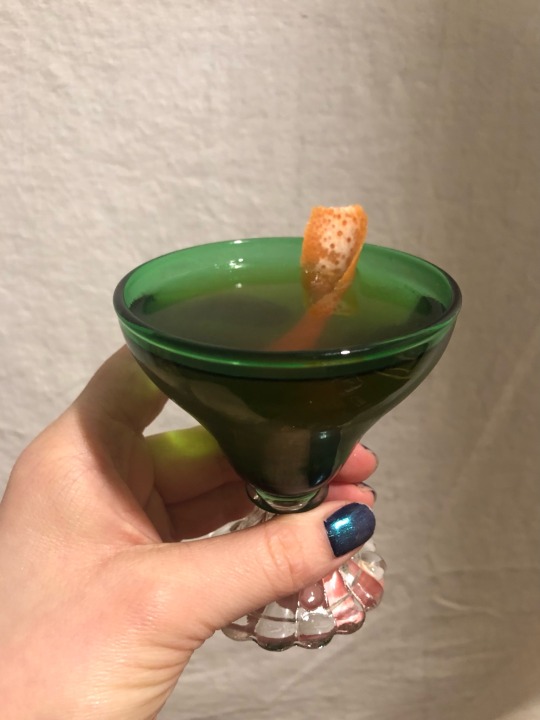
An addition to the cocktail chapter of the @worldsbeyondpod Unofficial Cookbook:
Honey With A Note Of Song
an absinthe wash (the green fairy, for your roots)
2 oz. rye (your liquor of choice, strong and spicy)
1/4 oz. pine and rosemary honey syrup (you cannot go home again)
1 barspoon of saline solution (for your first divine smite, where you found your breath once more)
1-2 dashes of peychauds bitters (because this is a play on a sazerac)
a grapefruit twist (a touch of the bitterness age has brought you)
serve in a glass reminiscent of a chalice
#worlds beyond number#wbn unofficial cookbook#Eursulon#the wizard the witch and the wild one#for absinthe wash: swirl a small amount of absinthe around the sides of your glass#for honey syrup: 2:1 honey to water ratio#i used pine in the common sense foraging various evergreen needles including pine fir and cedar (and rosemary)#for saline solution: 20g of salt dissolved in 80g of hot water#when foraging for needles make sure u know what ur grabbing and be wary of yew especially#in the words of Alexsis Nicole happy snacking don’t die!!!#cw alcohol#your honey is quiet (non-alc drink with honey syrup) and Ame cocktail coming soon#no idea what to make for a Suvi cocktail i’m so sorry Aabria#Ame cocktail will be slightly impossible to replicate bc it uses local ingredients but that’s the point u will have to brew ur own potion#if u make this ur not legally obligated to tell me about it in the tags or comments but it would make me really happy if u did!!!!!#update after staging the Ame cocktail with a little extra ✨✨ i wish i put more ✨✨ into staging this one as well#put my thing of bark behind it#¯\_(ツ)_/¯ o well
162 notes
·
View notes
Text
So I've been spending the last few monthes reading, watching, walking, and just overall researching foraging safely and the types of plants in my area. Today was the first day with my spouse and son that I was able to identify some plants confidently... so of course with my direction we began foraging.


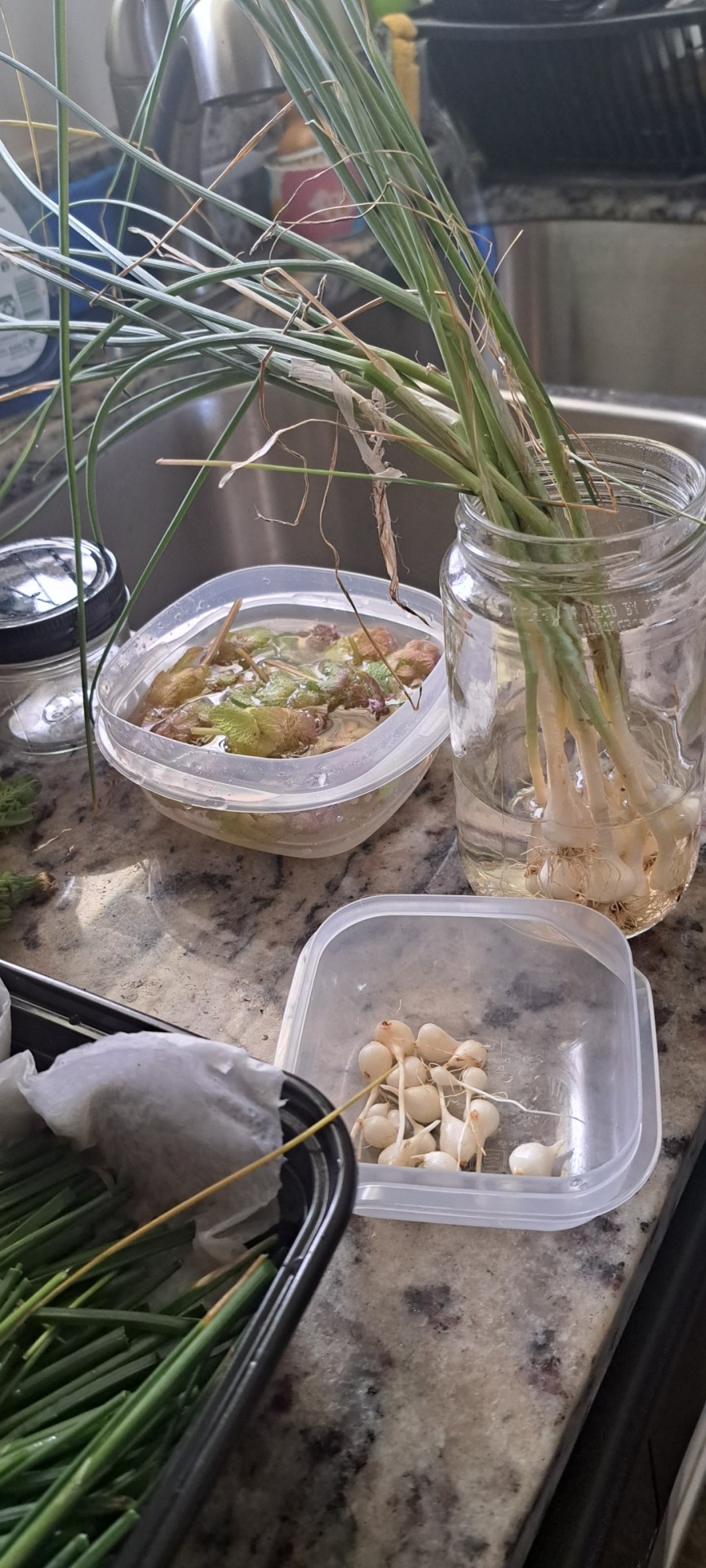
It saddens me that one of the main motivators for foraging today is knowing that my neighbors and my mother in law would be getting their lawns mowed soon and most of what I gathered today would've been lost. People just don't know what they have.
We pay to remove plants, herbs and even fruits growing naturally in our lawns, only to go buy the same plants from our grocery stores.
Plants found:
Dandelion: the whole plant is edible if you can spot it from its copycat. The leaves can be used the same way as most greens, it's roots when dried can be used to brew Dandelion coffee, and the flowers can be used for tea and to make honey
Chives and Onions: a common herb and garnish its stalks grow back once cut. If left to grow long enough they absorb nutrients better and can produce bigger onions but for now these chives were found before being mowed over and the onions are quite small but very strong and flavorful
Dead nettle: this one was new to me learning about it near the end of winter and seeing the small purple flowers growing. The flowers and leaves droop downward almost making a closed umbrella shape. It can be eaten raw or cooked and is used in salads and smoothies for garnish and flavor. They are high in nutrients and vitamins. Left to grow in the sun the purple turns almost pinkish and the leaves get lighter but still useful
Pine (cones, needles and seeds): I didn't forage the cones or needles today cause I knew I'd be busy, but baby pinecones can be cooked and eaten and the needles when cleaned and placed into an airtight container with water and sugar make a soda. I managed to find a few seeds in some of the fallen cones and saved them to plants in our future home
That's what we foraged. We are waiting for some more plants to develop and managed to convince my mother in law to leave certain sections of the lawn left uncut as some plants are still just starting back. Plants were waiting on are plantains, honeysuckle, and violets. Some plants are still too early to identify.
Using the dandelion greens tonight and making a pesto with some of them combined with the dead nettle and onions to use for a future pasta.
#witchblr#witches of tumblr#witch community#baby witch#green witch#green witchcraft#foraging#the blasian witch
688 notes
·
View notes
Text

#witchblr#witch art#witch#witchcraft#witchy art#witchy woman#forest witch#foragecore#foraging#altar art#goblincore#witchcore#hedge witch#green witch#art#illustration#watercolor style#ai art#smquinn#dreamweaverai#ai art community
137 notes
·
View notes
Text

July 2023. One of the many moon gatherings. Wolverhampton, England ✨️
#mine#tagged mine#witch#witchy#divination#apothecary#spiritual#hippie#nature blog#forage#foraging#herbalism#herbalist#fairy#faery#faerie#faeriecore#fairycore#cottagecore#when our good friend jess foraged sooooo many plants and offered us teas#was such a lovely night
50 notes
·
View notes
Text

some healer oscar + madam springs concept doodles!!
#the cat witchs guild#the misc adventures of mochi and lime#tcwg#tmaomal#oscar#madam springs#art#ocs#original#beta#stilllll working on his outfit#debating if i also want him to have the half-cape thing#or have one of those designs where he has the jacket hanging off his shoulders#need to play with it next weekend#stealing the apothecary oscar hat because i love it so much#why have your giant boar carry your foraging ingredients when you can have your apprentice do it instead#oscar shit talking regularly because he knows hes good apprentice material#(you cant fire me because you wont be able to find this good of an apprentice before you die)#madam springs: (insulted but impressed) you are a worthy heir#his outfit will hide his arm though#thats his trump card and she has him cover it#(dont rely on it if you dont have to.) she tells him
182 notes
·
View notes
Text
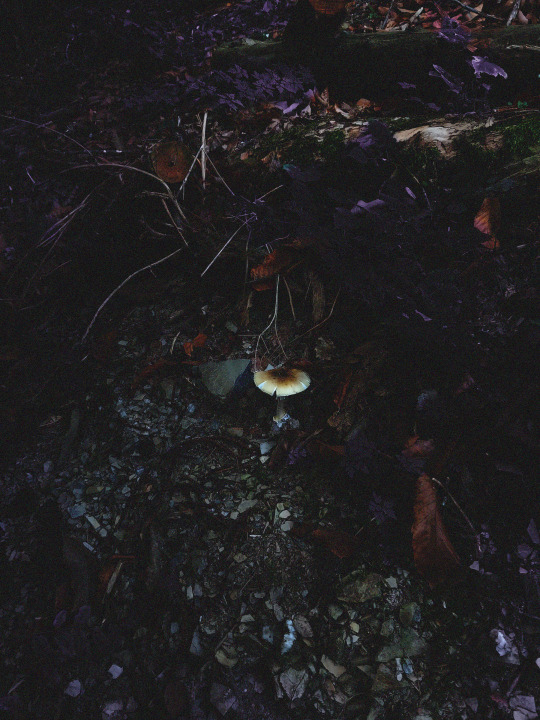
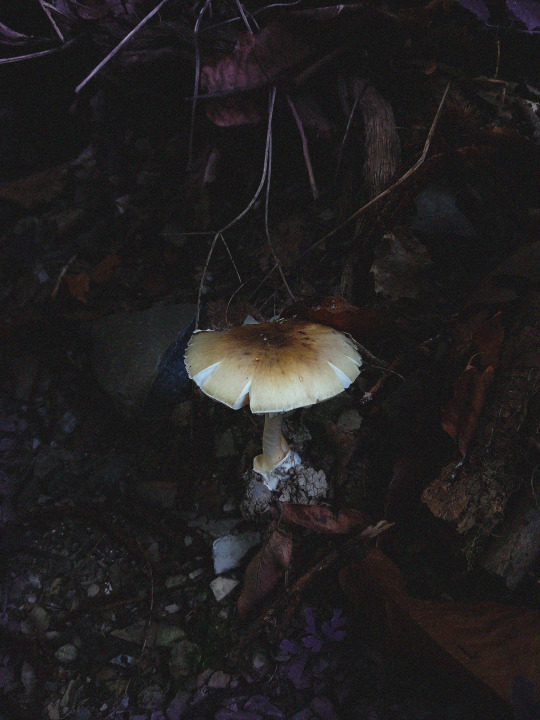
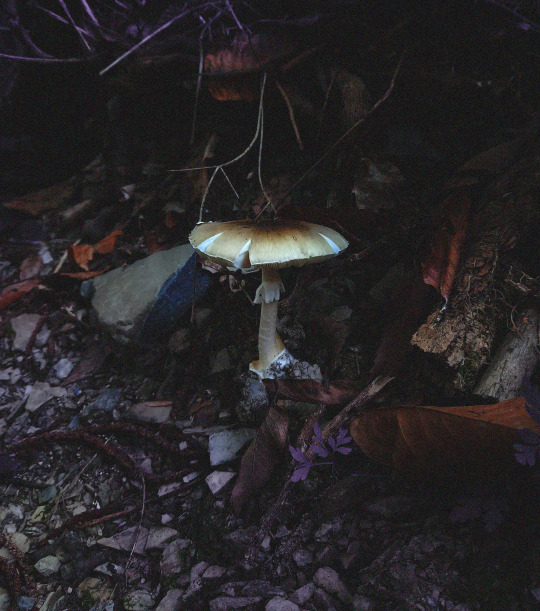
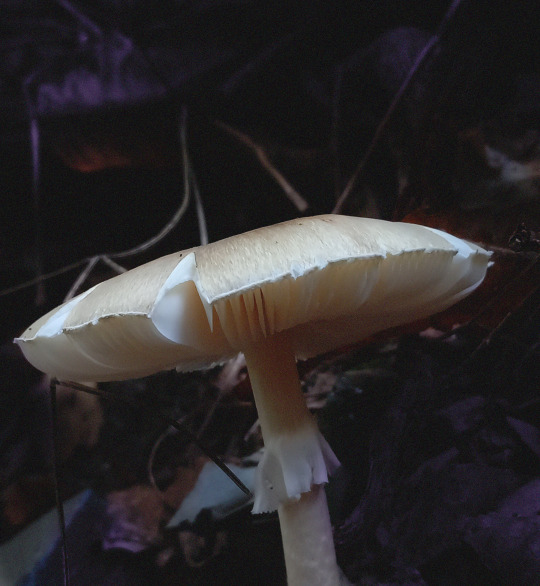

Amanita phalloides, commonly known as the death cap. It is one of the most poisonous of all known mushrooms.
Even very small fragments can be lethal (about 0.1 milligrams of fresh weight for every kilogram of weight of the person who ingests it), so about 7 mg for a 70 kg adult man; furthermore, the mushroom retains all its poisonous properties even after cooking, drying and freezing.
Found it today, 15 October 2023.
#original photographs#amanita phalloides#death cap#mushrooms#mushroomcore#fungi#mycology#foraging#autumn aesthetic#purple aesthetic#fairycore#dark fairycore#fairy aesthetic#fairy cottage#cottage witch#dark cottagecore#woods#forest#dark forest#forest floor#other#diary#studyblr#I found her!!!🥳🎉#it is not the destroying angel but I was also looking for this 🎉#Mary Katherine Blackwood likes this
198 notes
·
View notes
Text
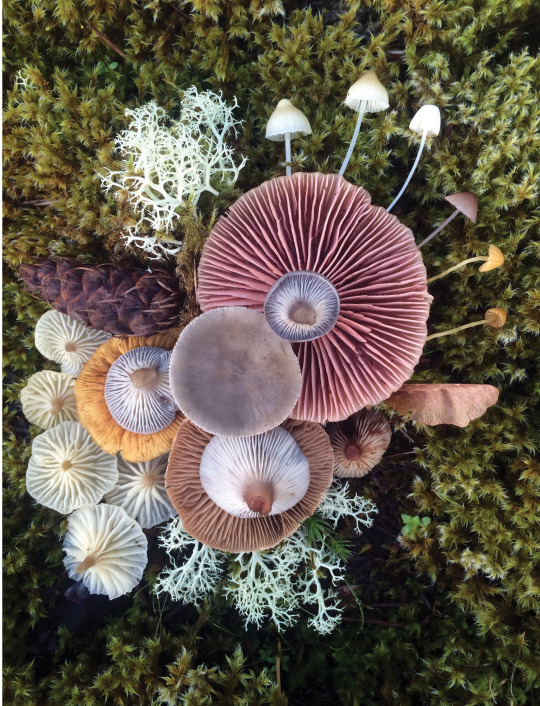
Mushroom Medley with Reindeer Lichen by Jill Bliss.
221 notes
·
View notes